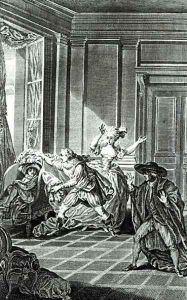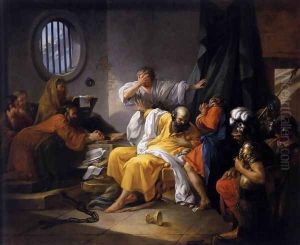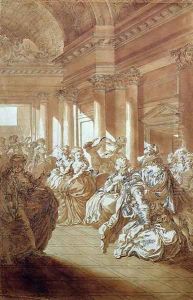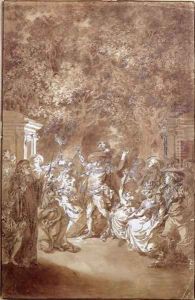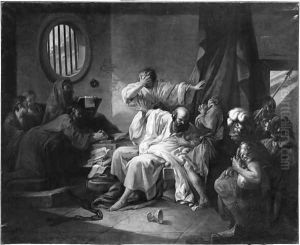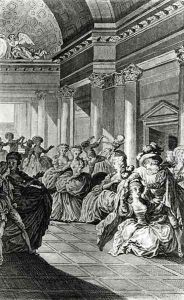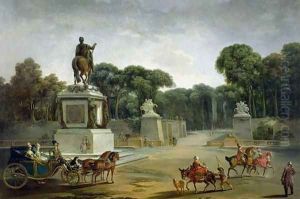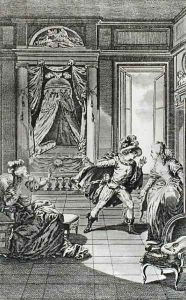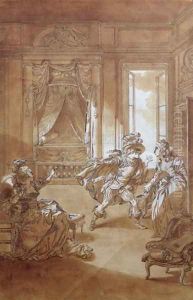Jacques-Philip-Joseph de Saint-Quentin Paintings
Jacques-Philip-Joseph de Saint-Quentin was a French sculptor born in 1695. There is limited information about his early life, and the details of his family background and education are somewhat obscure. However, it is known that he became an active artist during the Regency period and the early reign of Louis XV.
Saint-Quentin's artistic career was largely centered in Paris, where he developed a reputation for his sculptural work in terracotta. His style was reflective of the French Rococo movement, which was characterized by elaborate ornamentation, intricate designs, and an emphasis on asymmetry and fluidity. Rococo art often sought to evoke the lightness, elegance, and frivolity of the French aristocracy during this period.
Despite being less well-known than his contemporaries, such as the sculptor Edmé Bouchardon, Saint-Quentin was recognized for his craftsmanship and the delicate modeling of his figures. His works were appreciated for their vivacity and the skill with which he captured the textures and draperies of the subjects he sculpted.
Saint-Quentin's contributions to the arts extend beyond his own creations. He was also a teacher, imparting his knowledge and skill to students who would carry on the traditions of French sculpture. Nevertheless, the legacy of Saint-Quentin is somewhat overshadowed by the more prominent artists of his time, and as a result, comprehensive records of his life and works are not as readily available.
Jacques-Philip-Joseph de Saint-Quentin passed away in 1748. While he may not be as widely recognized as some of his peers, his work remains a testament to the craftsmanship and aesthetic sensibilities of the Rococo era in French art history. His surviving pieces, though few, continue to be studied and appreciated for their contribution to the development of French sculpture in the 18th century.
